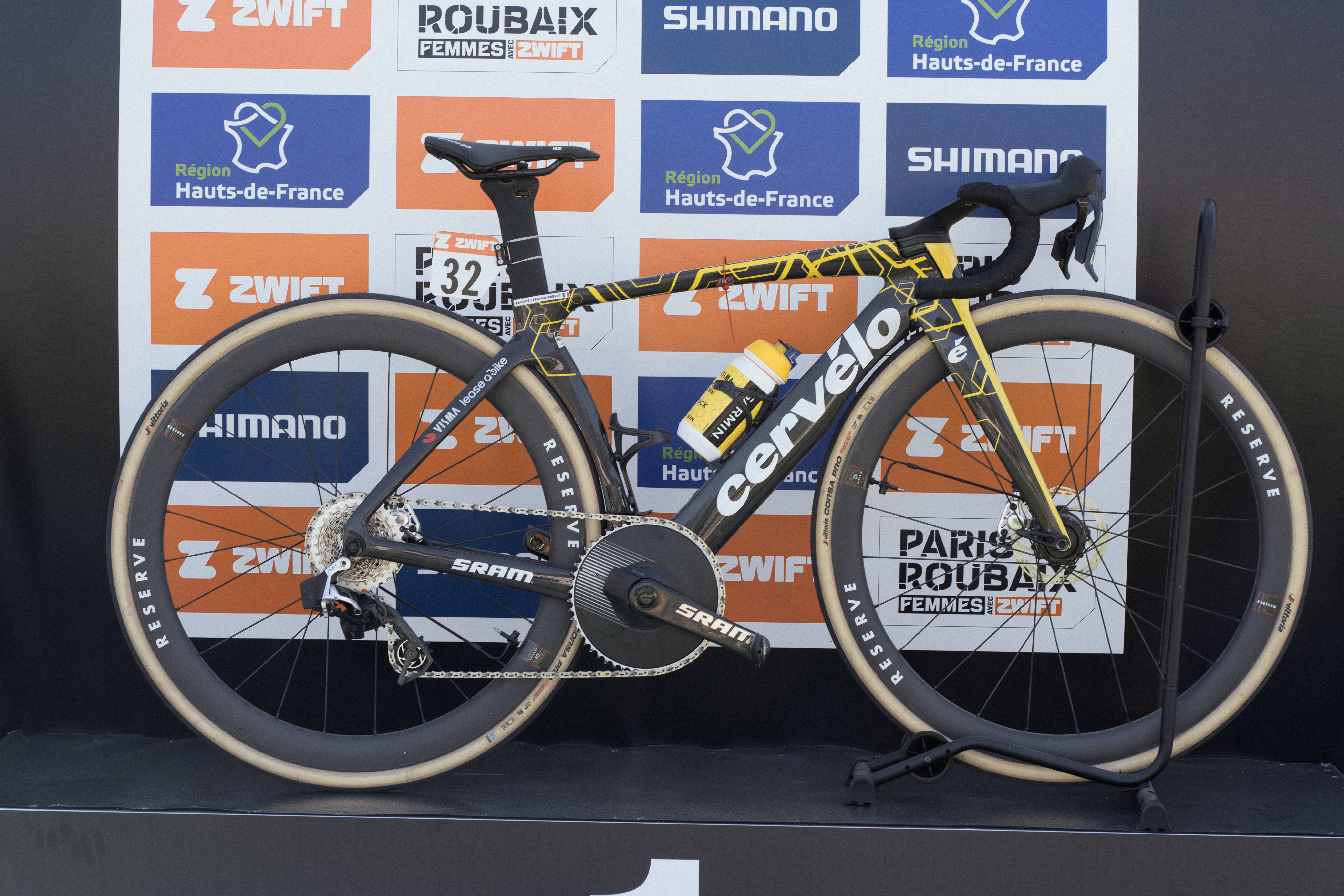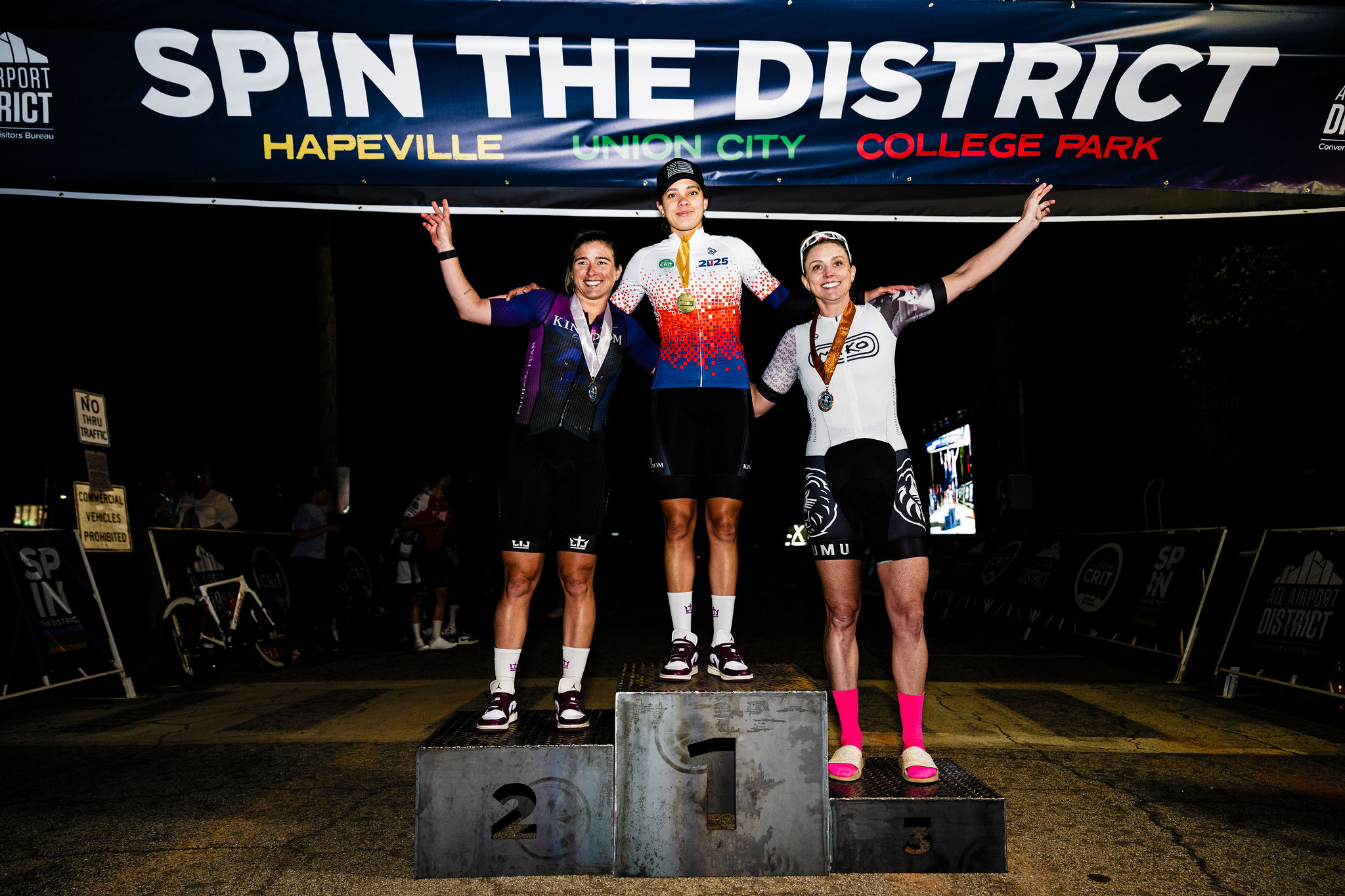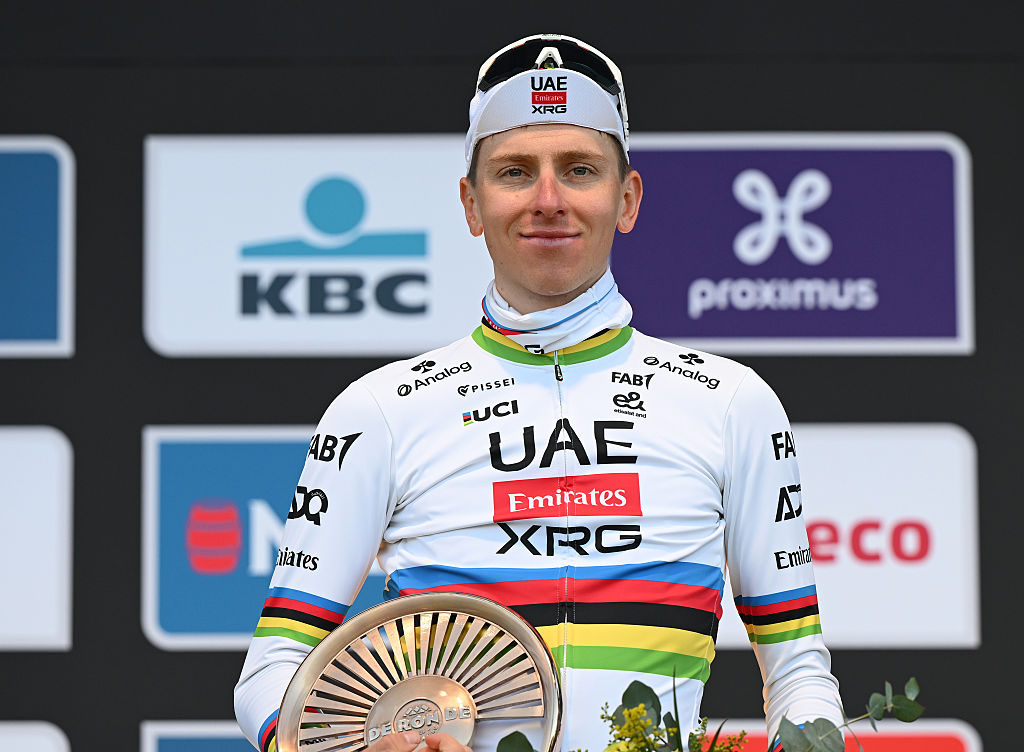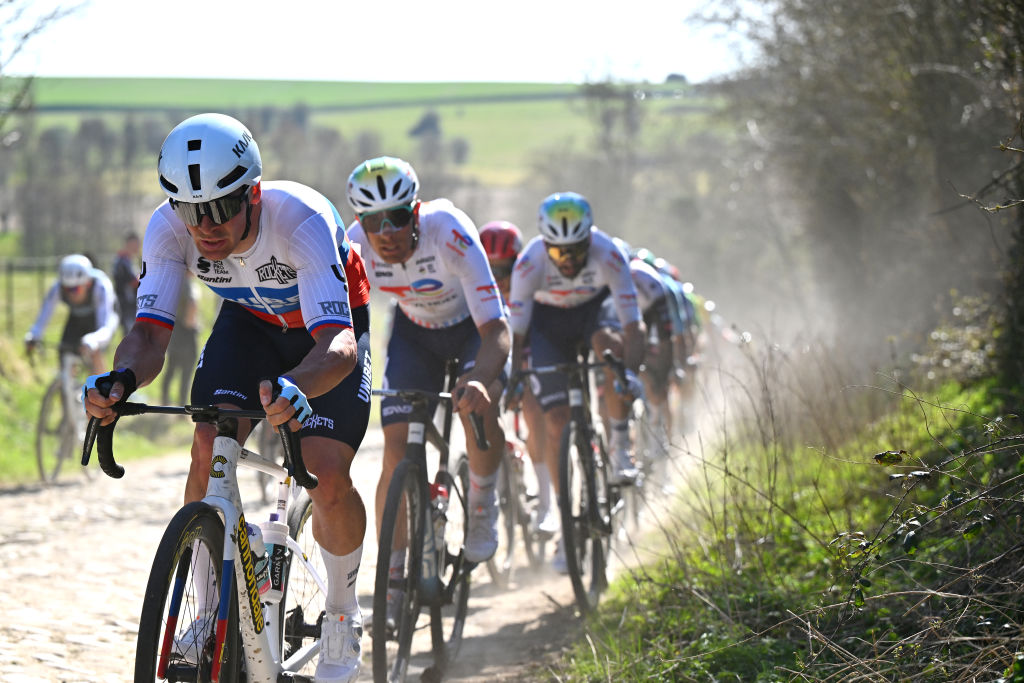Vuelta a España 2022 route
From Utrecht to Madrid, the full map of the 2022 Vuelta
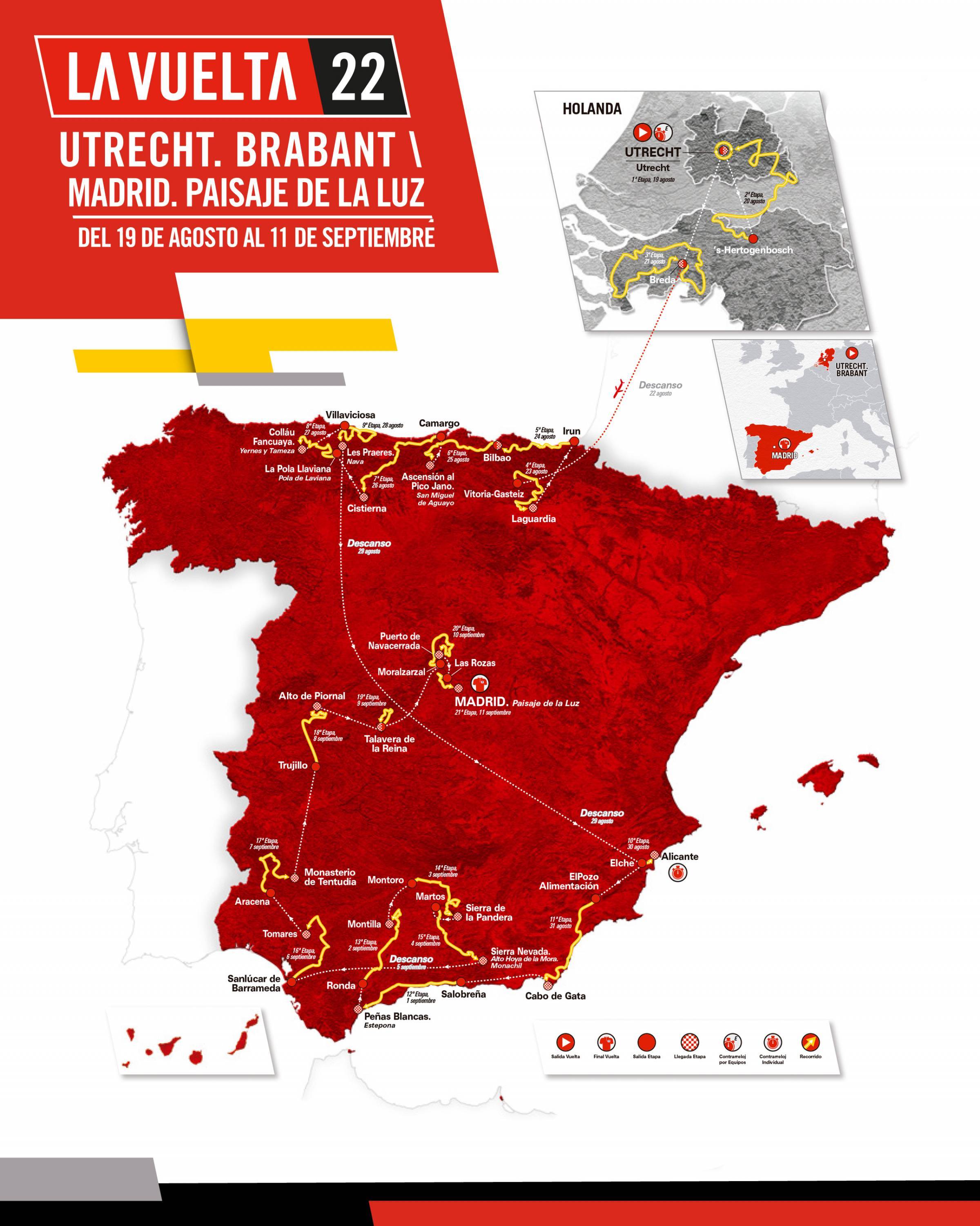
The 2022 Vuelta a España starts on August 19 in Utrecht, Holland, and ends in Madrid, Spain, on September 11. The 21 stages include a team time trial, an individual time trial, several flat stages and nine of the often-steep uphill finishes the Vuelta has become known for. You can dissect the route in more detail in our Vuelta a España preview.
Two years after the pandemic caused a postponement of the Vuelta a Espana’s Dutch start, Utrecht will finally become the first city in the world to organise the opening stage of all three Grand Tours after the Tour de France in 2015 and the Giro d’Italia in 2017.
Cycling landmarks apart, what matters most about Holland is its long (by modern standards) opening team time trial of 23km, enough to seriously shape the general classification on the opening day.
There are two further stages on Dutch soil, which are both flat and likely to culminate in bunch sprints, before the race pauses for a travel day to transfer to Spain.
The Vuelta resumes on August 23 with two medium mountain treks through the Basque Country, preceding the first uphill finish of the race at Pico Jano on stage 6. There is more of the same as the Vuelta moves across northern Spain into Asturias at the back end of a long opening week that makes up for the relatively gentle start in Holland.
Stage 7 features just one mid-race climb, but there are back-to-back summit finishes on stage 8 and stage 9, at Collado Fancuaya and the super-steep slope to Prades, respectively.
Follow our stage-by-stage Vuelta a España route guide to see what each day of racing holds in store.
A hard and decisive second week
The first proper rest day on August 29 sees the race make the long transfer from the north coast to the south east coast.
The second week then begins with the all-important individual time trial on stage 10, a 30km route between Elche and Alicante. Pancake flat and exposed, a poor day for the climbers could create almost unbreachable distances for the second half of the race.
Stage 11 pays homage to Alejandro Valverde with a start in his home town of Murcia on a flat day before the race heads west along the south coast the climbers come back to the fore on the category-1 summit finish of Peñas Blancas on stage 12, which is notably longer and tougher than when the race last visited the southern Andalucían ascent in 2013.
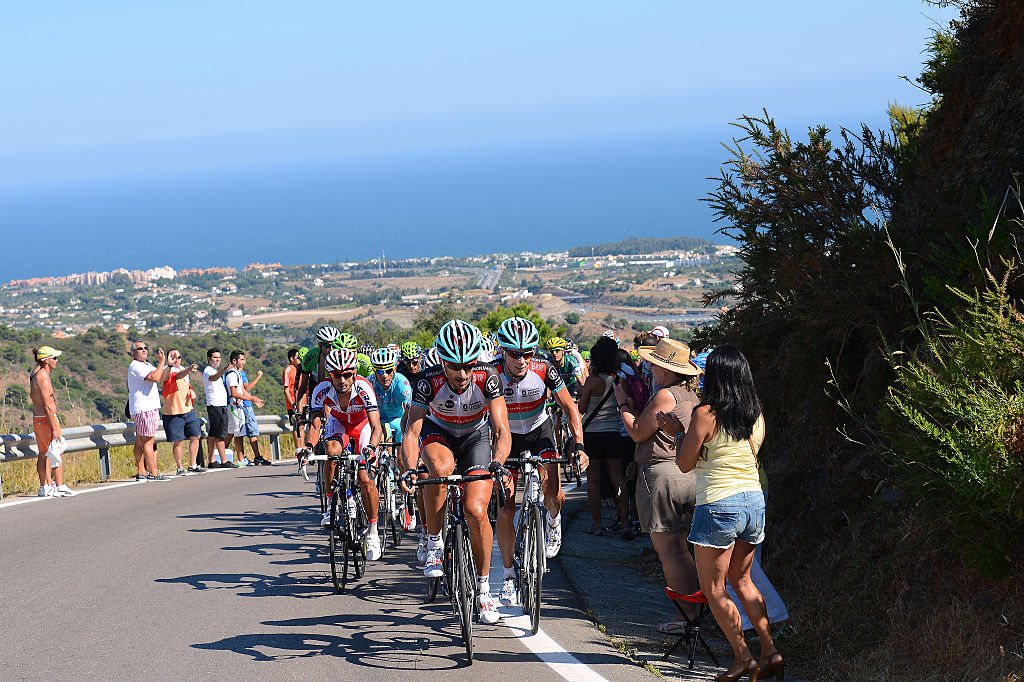
Stage 13 is flat with an uphill drag to finish, but it's another back-to-back helping of mountain summit finishes to end the second week in what could well be the most decisive phase of the entire race. The two-in-one ascent of the second-category Villares and the first-category Sierra de la Pandera on stage 14, will be another brutally difficult day but the real climbing key to the Vuelta will be stage 15 to Sierra Nevada on Sunday, September 4.
The only stage to finish at more than 2,000 metres above sea level and the only stage with more than 4,000 metres of vertical climbing, Sierra Nevada is also the only Hors-Categorie ascent of the entire race. And that title is fully justified, given the final ascent is, if you include the very hard approach to its base, more than 30 kilometres long and, rather than the usual ‘easy’ main ascent to the ski station, this includes a lengthy, narrow, ultra-hard middle section of Hazallanas, which averages around 12%.
Ambush potential in the final week
Despite the challenges of the second week, the third and final week cannot be written off completely.
Following a probable sprint on stage 16, the climbing returns with the second-category final climb to the Tentudia monastery on stage 17, and ramps up on stage 18's trip up to the Alto del Piornal, with back-to-back first-category climbs. There's no real respite either on stage 19's short, ultra-explosive circuit at Talavera de la Reina, with potential for ambushes aplenty.
But the really key stage in the Vuelta’s dying days is undoubtedly the last in the mountains, through the sierras of Madrid, on stage 20. The Vuelta is littered with the history of leaders who had been strong throughout the majority of the mountain stages, but who suddenly found the Cotos, the Navacerrada and the Morcuera climbs, almost within sight of the Spanish capital, impossible to handle.
At the very least, the history of the Vuelta is such that any leader will not be able to breathe easy until the final, largely ceremonial stage, through the streets of Madrid on Sunday, September 11.
Get The Leadout Newsletter
The latest race content, interviews, features, reviews and expert buying guides, direct to your inbox!
Cyclingnews is the world's leader in English-language coverage of professional cycling. Started in 1995 by University of Newcastle professor Bill Mitchell, the site was one of the first to provide breaking news and results over the internet in English. The site was purchased by Knapp Communications in 1999, and owner Gerard Knapp built it into the definitive voice of pro cycling. Since then, major publishing house Future PLC has owned the site and expanded it to include top features, news, results, photos and tech reporting. The site continues to be the most comprehensive and authoritative English voice in professional cycling.
Latest on Cyclingnews
-
Gallery: Paris-Roubaix women's podium bikes
Fresh off the cobbles, all three bikes from the podium of Paris-Roubaix Femmes -
USA CRITS: Lucas Bourgoyne goes back-to-back at Hapeville Crit while Aylena Quevedo takes pro women's win
Women's Kingdom Elite team goes one-two with Jeydy Praderas on podium ahead of Erica Carney -
'We should just go for it' - Tadej Pogačar nervous but confident about Paris-Roubaix debut
UAE Team Emirates prepare to take on Van der Poel, Pedersen, Van Aert in the Hell of the North -
Lukáš Kubiš inspired by Peter Sagan as he leads Unibet Tietema Rockets charge into debut Paris-Roubaix
Slovakian revelation in Spring Classics heads up French squad at the biggest race in their history
